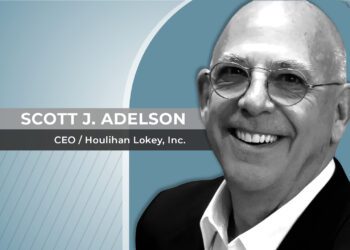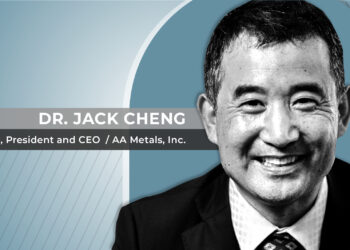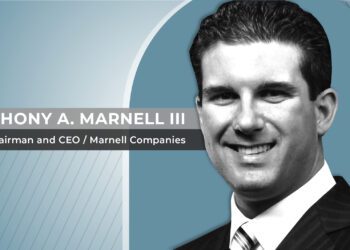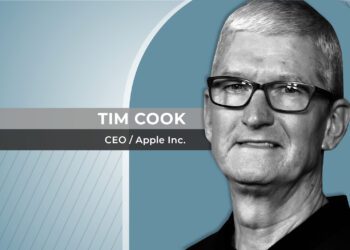CEO Rick Bergman leads Synaptics through a period of explosive growth, but now he’s ready to pursue new goals.
Ease of use. As technology increases the scope of what machines can do as they interact with humans and among each other, the key to incorporate advancements into everyday life is to make them feel effortless to the user. And what is easier than gesturing, touching and speaking?
Enter Synaptics, a company on the bleeding edge of sensors and biometrics that is not only pushing for better and easier to use technology, but also to increase security by pioneering anti-spoof systems and other security measures, says Rick Bergman, the company’s head.
Bergman has lead the company for the last 6 years through a period of explosive growth that has taken it from around US$500 million in revenues in 2011 to US$1.7 billion by the end of 2017, a more than three-fold expansion that has also been reflected in personnel size.
When Bergman arrived at Synaptics from microchip giant AMD, the company “had some key technology, but not sustained commercial success,” he remembers. Now “the company has transformed itself from a significant player in the personal computing space to a much broader supplier in the mobile space.”
That entry into the fast-paced mobile market dominated by the smartphone has led the company to learn to work within very short timelines, as the wheel of innovation rarely takes more than six months to turn. “We have created a sort of execution machine at Synaptics that can be very responsive to our customers’ needs,” Bergman says. “I believe the customers that we deal with finds that quite refreshing.”
A decade, a model
During its over three decades of existence, Synaptics has evolved from a small startup looking for its place in the technology market to where it is now.
Every decade, Bergman comments, has covered roughly one phase of development.
During its first 10 years it launched and tried to find commercial success. Afterward it found a place as a trusted provider of touchpads for notebooks and, during the last 10 years, it has become the go-to company for the increasing amount of biometric technologies we find in our day-to-day life.
Who does not enjoy the added security of unlocking his or her device with a fingerprint or a customized gesture?
An article published earlier this year on the NAS- DAQ exchange website identified Synaptics (SY- NA) as one of the top tech stocks to follow in 2017.
“With its multiple product lines and long history in this sector of technology, it looks to me as if this small cap (US$1.9 billion in market capitalization and about US$1.6 billion in annual revenue) is set to remain among the top tech stocks for 2017 and the years to come,” the article’s author says. “With its suite of products and pioneering technology, and a promise to expand beyond the smartphone and PC markets into automotive, wearables and PC peripherals, I believe this game-changer’s time is finally here,” she adds.
According to some experts, the company shares’ 22 percent drop this year to could be viewed as an opportunity for investors, as a new wave of smart- phones with TDDI (Touch and Display Driver Integration) technology, designed to enable full- body screens, sets its sights on the market.
Consumer IoT as the future
But, Bergman says, that is the present, and both the PC and smartphone markets are showing signs of less robust demand. With that in sight, two years ago the company set on to determine its new growth platform and saw a match to its strengths and technology in the field of Consumer IoT (Internet of Things).
“We are honestly doing well in PC’s and mobile phones, but we are catching an early ride into this Consumer IoT wave to take us into new, multi-billion-dollar territory,” the executive adds. That’s where the acquisition of Consumer IoT systems’ company Conexant makes sense, Bergman said in a July press release announcing the multi-million-dollar transaction. We will not only diversify our customer base, but also provide our customers more value-add. We look forward to working with our global partners to deliver a full range of solutions to our core mobile, automotive, and PC markets, and now for consumer IoT,” it stated.
Speech recognition devices, Conexant’s main strength, will become one of the ways for Synaptics to bring about the connected home revolution, as users will be able to tell new generation devices what to do and when to do it.
That new business, however, comes with the added complexity of a developing sector with a potentially much broader market than the more established computing and mobile ones, Bergman admits. “This is a very diverse set of customers in a range of different areas. From Synaptics’ perspective, we now need to be able to support that breadth of customer base that we haven’t had before.”
Besides the added distribution demands, “we also need an operational machine that will be able to handle, instead of tens of customers, hundreds or maybe even thousands of customers and a much larger number of parts and device types.”
A centralized operations team, able to communicate and leverage similar suppliers for different products, is part of the solution, he explains.
Synaptics: Spurning Hierarchy
Despite its centralized operational structure, each division of the company is allowed to pursue of its goals and improve its products. Bergman’s own role, he says, is to keep track of all the different strategies and keeping an eye on the company’s overall wellbeing.
One of the core areas he identifies as a strength for the company structure is the fact that Synaptics functions pretty much as a at, hierarchy-less team so as to avoid functional barriers that could hamper growth.
“Sometimes it’s just like a poster on the wall, but at Synaptics we are a team. I like to think that functional barriers quickly evaporate and that we all work together here when there’s an opportunity or a challenge.”
“Despite being in a really tough industry, our culture has remained intact through our history and people really like to work at Synaptics and enjoy the challenges of being part of the team, and that’s what keeps them here. That’s what keeps them energized,” Bergman adds.












